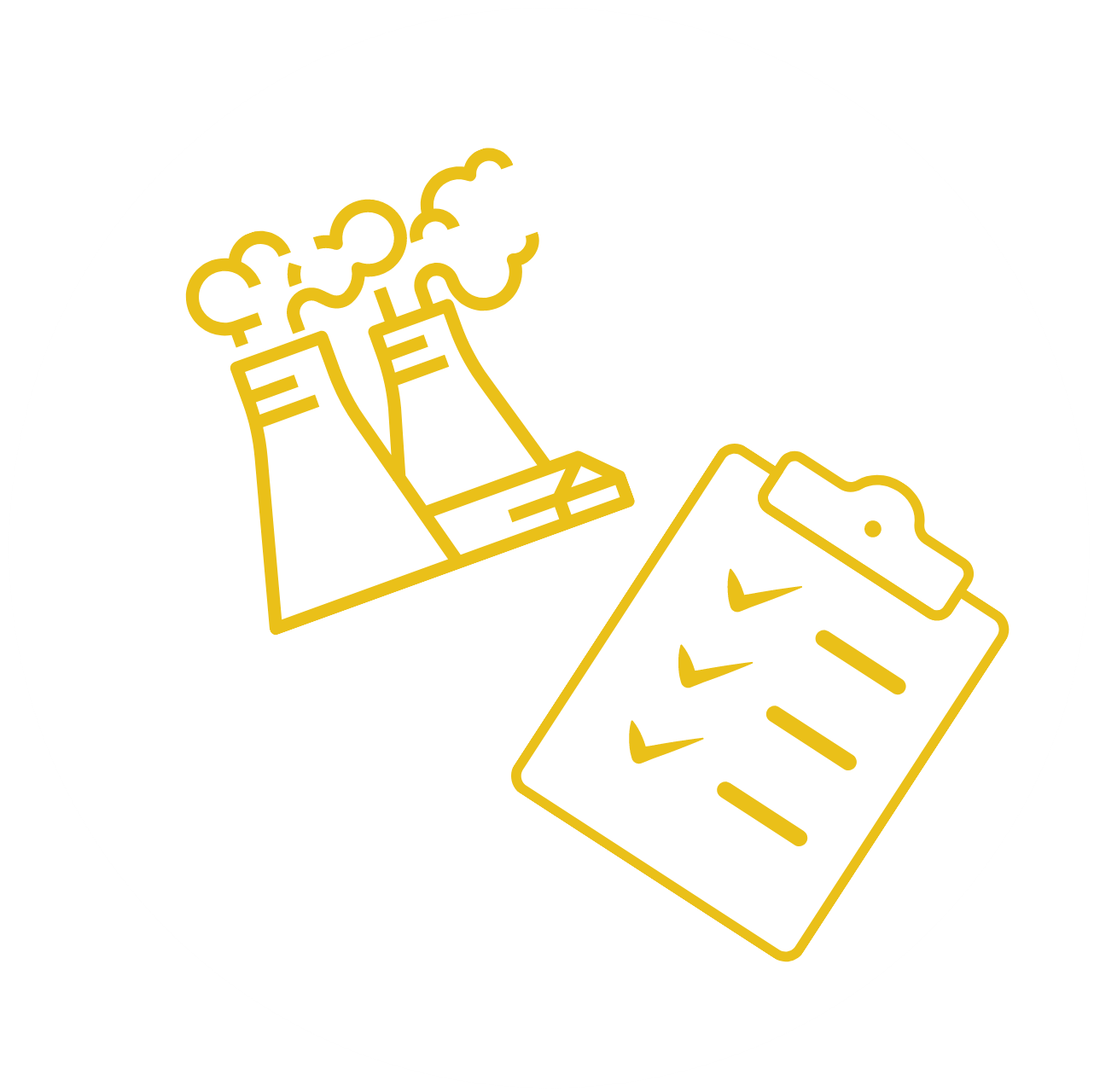
Physical Place:
Climate & Emissions
START Metric #34:
GHG Emissions Inventory
⬅ Back
Ideas & Resources

Tracking and calculating your school’s greenhouse gas (GHG) emissions is a critical step toward understanding and reducing its carbon footprint. This START metric emphasizes measuring emissions from various sources, including electricity use, food waste, meat consumption, transportation, and more. It also accounts for the amount of GHGs your school proactively sequesters through initiatives like tree-planting, using green building materials, adding biochar to soils, and waste diversion.
The importance of such inventories cannot be overstated: schools, like all institutions, play a role in addressing the climate crisis. Globally, carbon dioxide (CO₂) emissions reached approximately 36.8 billion metric tons in 2022, with education systems contributing through energy use, food systems, and transportation (IEA). Conducting a GHG emissions inventory helps schools identify key areas for reduction, set measurable goals, and engage students and staff in meaningful climate action.

Strategies for Conducting a Greenhouse Gas Emissions Inventory
NOTE: This is not a prescriptive list; it just offers ideas to inspire action and can be tailored to fit the unique needs of each school.
Establish a GHG Inventory Team
Form a dedicated group of staff and students to lead the emissions tracking process.
Assign roles for data collection, calculation, and reporting.
Identify Emission Sources
Catalog all GHG emission sources, including electricity and heating, transportation, food waste, meat consumption, and on-site equipment use.
Include indirect emissions from purchased goods and services where possible.
Use GHG Tracking Tools
Adopt widely available carbon calculators or software designed for schools.
Ensure tools follow international standards like the Greenhouse Gas Protocol.
Measure Energy Consumption
Analyze electricity, heating, and cooling usage across the campus.
Identify high-consumption areas and opportunities for energy efficiency.
Calculate Transportation Emissions
Track emissions from school buses, staff commuting, and student transportation.
Include travel emissions from field trips or extracurricular activities.
Assess Food-Related Emissions
Calculate the GHG impact of food served in the cafeteria, focusing on high-impact items like meat and dairy.
Measure the amount of food waste generated and its associated emissions.
Track Waste Diversion Efforts
Quantify emissions avoided through recycling, composting, and other waste reduction initiatives.
Include methane reductions from diverting organic waste from landfills.
Account for Sequestration Activities
Record the carbon sequestration potential of tree-planting, soil improvements, and other green initiatives.
Include innovative practices like using biochar in soils or green roofs on buildings.
Set Emission Reduction Goals
Use the inventory to establish realistic short- and long-term reduction targets.
Prioritize actions with the greatest impact, such as transitioning to renewable energy or reducing meat consumption.
Engage Students in the Process
Integrate GHG inventory activities into science or environmental education.
Encourage students to research innovative ways to reduce emissions or enhance sequestration.
Monitor and Report Progress
Repeat the inventory annually to measure progress against reduction goals.
Share findings with the school community to maintain transparency and accountability.
Offset Residual Emissions
Invest in certified carbon offset programs to neutralize emissions that cannot be eliminated.
Focus on projects aligned with your school’s values, such as renewable energy development or reforestation.
Additional Resources
-

Emissions Calculator for Small Schools
From the EPA, a calculation tool to help low emitter organizations estimate and inventory their annual greenhouse gas (GHG) emissions.
-

GHG Protocol Calculator
From the Greenhouse Gas Protocol, an excel-based tool to help you calculate your greenhouse gas emissions.
-
Schools hold the key to a healthy, sustainable and regenerative future.
They are role-models and incubators that that nurture, educate and prepare each generation for adult life.
Schools have a unique opportunity and profound responsibility to become part the transition to a sustainable, regenerative future in which people and planet can thrive.
But how do we get there?

START: Sustainability Tracking, Analytics & Roadmap Tool was created by schools, for schools, to help them develop comprehensive programs for step-by-step progress towards sustainability, regenerative practice, and student empowerment.
START provides a Roadmap for School Sustainability:
It breaks down school sustainability into clear actions (‘metrics’), such as Minimizing Waste, Reducing Greenhouse Gas Emissions, and supporting Sustainable Transportation options.
However, research shows it’s not enough for a school to simply reduce its environmental impact.
Students and staff also need to learn about sustainability, and practice it in day-to-day activities, because this impacts their attitudes and behaviors when they leave school. That’s why START includes metrics like Sustainability Events for Students, Sustainability Course Content, and Sustainable Purchasing Practices.
How sustainable is our school now?
Schools use START to measure how sustainable they are now. A school’s START team investigates how their school currently operates to find their ‘sustainability baseline’ for each metric. For example, is our school a beginner, intermediate or advanced in sustainable water use? START enables schools to benchmark, track and visualize their current sustainability levels, as well as hard data around their waste, water, energy and greenhouse gas emissions.
Where should we go next, and do we collaborate for success?
What do we need to do to ‘level up’ in each metric? Once schools have their baselines, START helps them to set goals and plan for progress. START provides a central hub for school members to collaborate, document, and plan their school’s sustainability journey.

START is a subscription-based Whole School Sustainability dashboard.
It requires at least one adult school member to create a school’s START account, but it will need a team (students, teachers and staff) to grow a Whole School Sustainability program.
Interested schools can sign up for a demo or apply to set up an account.
Learn more about START here, and consider sharing the brochure with your school.
Let’s create a better future, one school at a time.
Contact us at guides@greenschoolsalliance.org if you have a free resource to contribute or recommend that can help schools take action around this specific sustainability metric.






